As is my custom, this Blog of Writing has a preview of two images for an upcoming article. Decoded Science published " Is the Elevator Puzzle a Math Paradox or a Paranoid Delusion?" on Aug. 30th. The Elevator Puzzle is a very real effect, but can lead to feelings of paranoia: " Why is the elevator going the wrong way whenever I want it"? 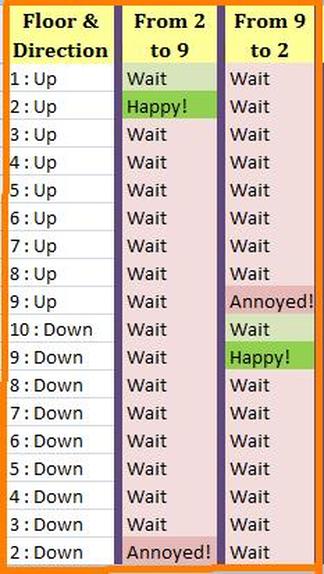 "Elevator Puzzle 2 or 9 of 10" by Mike DeHaan This is the smaller image.
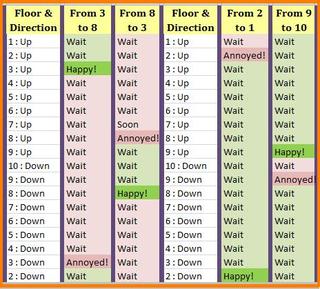 "Other Elevator Puzzles with 10 Floors" by Mike DeHaan This is, surprisingly, the larger image. As always, I also promote my article in my current DeHaan Services blog, " Decoded Science Answers the Elevator Puzzle" and on the " DeHaan Writing" page of the DeHaan Directory.
Writing Tips
One of the ongoing challenges, for me at least, in the Math section of Decoded Science is to stick to a reasonable length for the article.
I do blame Microsoft Word (and any other word-counting word processor) for breaking text by the obvious characters such as ' ' [blank], ',' [comma], and ';' [semi-colon]. Those are perfectly reasonable choices, but math articles have lots of 1-letter symbols.
Regardless, the article is a bit long.
Today's writing tip is to break up long text with headings and images. This reassures your readers that you are, indeed, making progress.
I like to publicize Toronto events in my DeHaan Services blog. Today I finally wrote "How to Find Toronto Buskerfest 2011". 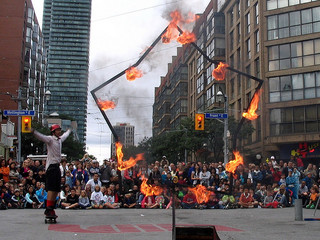 "Fireboy, a Busker in Toronto Buskerfest 2009" by Loozrboy Although there were many images from past Buskerfests, I thought this was the most spectacular one available.
Writing Tip
With a focus on "how to get there", I included several references to Toronto landmarks, such as the CN Tower. The writing tip is: when appropriate, include the names of places, organizations, or other potential advertisers. On a monetized site, there is some chance that these will become in-line text advertisements (through Kontera in-line text advertising) or Google AdSense advertising blocks. Temporary Test of Kontera
Simply a test of some key words that Kontera is likely to notice and turn into links. Kontera might offer a dictionary definition for how to run a marathon. Fitness training might also trigger an ad. I don't recommend protein powders or other processed food supplements except under very specific conditions. If you travel to compete in a road race, consider that you should book a hotel well in advance since the other runners will compete for billets and accommodations, not just for the gold medal. I really wanted to test this since I added a note to my DeHaan Directory "About" page on Aug. 26.
Once again this blog offers a quick preview of an image that I created for Decoded Science.
 "Image of Monty Hall Spreadsheet" by Mike DeHaan Original artwork by myself, simply to provide a copyright notification. My Decoded Science article, "Solve the Monty Hall Problem using Logic and Mathematics", uses simple logic as well as the mathematics of probability theory to explain the best strategy for this game. It also introduces the eponymous Monty Hall, a member of the Order of Canada, and explains why Marilyn vos Savant was criticized for her solution of the Monty Hall problem.I will also take the opportunity to mention that my DeHaan Services blog also makes note of the Decoded Science article in "The Three-Door Monty Hall Problem".
Writing Tip to Frame the Image
Today's writing tip is about self-made images for articles.
I had to update the "Monty Hall Spreadsheet" image by adding a thin brown border. When published against an all-white web page, the spreadsheet just bleeds off into the rest of the page.
In my article, an image that I found also has this problem. I think it was a screen capture that someone took and posted. The picture was exactly what I had hoped to find...but I did not realize the text was part of the image.
Since I don't like to alter other people's artwork, I left it alone. In my view, since that image ends the article, the "extra" text does not detract too badly.
Let me generalize: any image without a clearly-defined border risks bleeding into any background. As well, the background colour or image of a web site may change.
But if I were much more serious about the complete package presented in an article, I would ensure that every image has its own little border.
Today's writing tip is: as much as is in your power, put a border on every online image.
Decoded Science has only a few articles in its "Lab" section, so I boldly wrote " The Leidenfrost Effect is a Simple Home Science Experiment". As is becoming standard operating procedure when I write for that site, I had to create some images. This time I used an actual camera!Another standard procedure is to pre-publish my own images here, so there is no question about who has copyright. 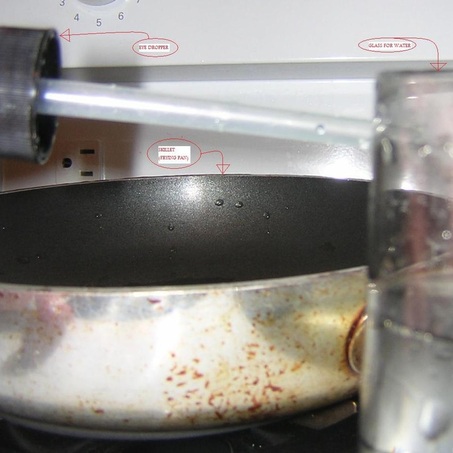 "Image of Leidenfrost Equipment" by Mike DeHaan Equipment is the first physical requirement for performing an experiment.
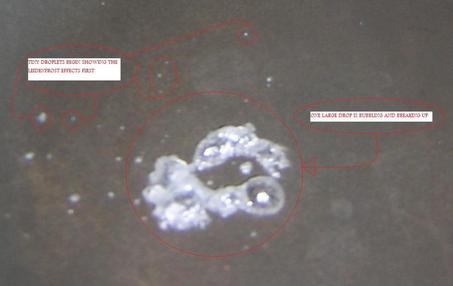 "Image of Leidenfrost Effect" by Mike DeHaan Capturing the image of an "effect" is pretty tricky.
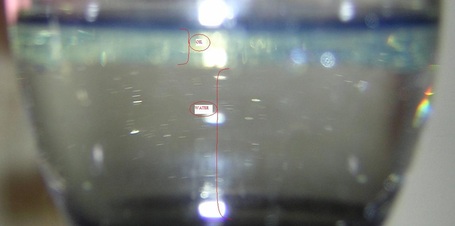 "Image of Oil on Water" by Mike DeHaan Commenting on safety concerns, I note that oil floats on water, as illustrated here.
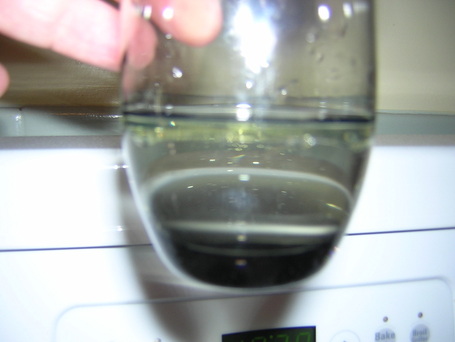 "Image of Water under Oil" by Mike DeHaan Importantly from a safety aspect, the water goes under the oil. Another reason to read this article is to learn why the Leidenfrost Effect makes kitchen grease fires so dangerous. As usual, I also promoted my article through my DeHaan Services site. " How to Demonstrate the Leidenfrost Effect" is purely a promotional piece, simply offering another route for readers to find this article.
Writing Tips
The poor images that I made were dropped by a wise editor, who found some images available online. I have two writing tips for today.
Although it is easy and safe to select "Commercial Re-use" as filters in Google Images and Flickr advanced searches, some images are licensed with no restrictions but are not shown in those categories. If you are strapped for pictures, try looking with no filter and then, as always, double-check whether the image is unrestricted.
If you make your own images, be sure they are of high quality, legible, make the point you need, and improve your article.
Once again I need to save a pair of my original images here in my Blog of Writing before including them in an article in Decoded Science. My article is "L'Hopital's Rule is a Hospital to Cure Ailing Functions". One of the other issues is whether a URL will pick up the 'ô' with the circumflex accent. 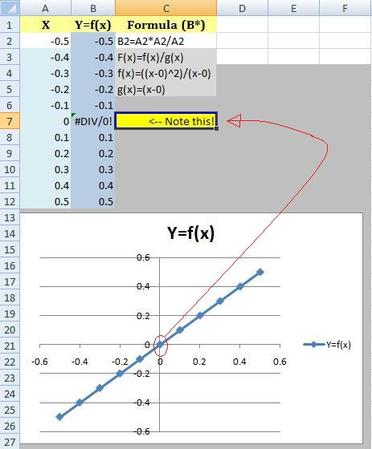 "Image of X-Squared over X" by Mike DeHaan First we have a function that has a "zero divided by zero" problem.
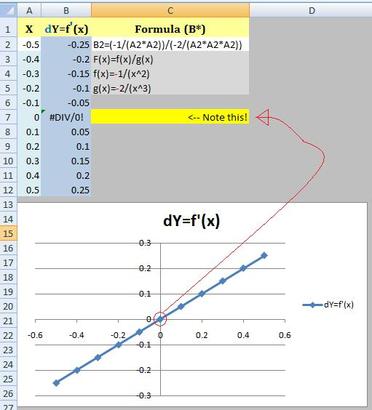 "Image of -1/X^2 over -2/x^3" by Mike DeHaan Secondly, I needed a first derivative with an "infinity divided by infinity" problem.
As always, I also promoted my article from my DeHaan Services site. " Send that Sick Function to L'Hospital's Rule" is pure publicity; this Blog of Writing article has the added value of three writing tips. Writing Tips
My first writing tip is to keep close focus on the subject matter. When I started writing the "L'Hôpital's Rule" article, I realized that I had begun to prove several minor points. Yes, this would be important in a scholarly thesis. No, this is a useless distraction in a popular article. My second writing tip is to know the exact importance of the subject material. Since L'Hôpital's Rule deals with the slope at a point, I expected that it was all about finding that slope. No, it really is about...well, read my article. The writing tip is to understand this before getting sidetracked and wasting time on a dead end. My final writing tip for today is that the ' ô' is a bad choice in an online article's title. At least the Weebly editor simply deleted it...which makes the URL pretty useless for SEO purposes. (If you need to know what "URL" and "SEO" mean, please leave a comment to let me know that I need to write an article explaining these terms). That may be a record: three writing tips in one blog entry! You're welcome.
My latest Environmental Graffiti article, " New Hope for the Endangered Ladybird Spider", is based on a news report from England. 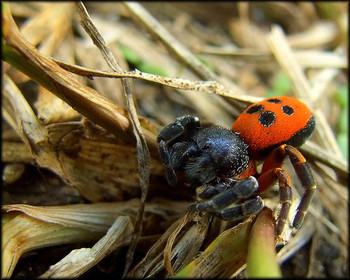 "Ladybird Spider in Germany" by ufoncz Amazingly colourful, the Ladybird Spider was believed to be extinct in Britain, but has made an extremely limited comeback. As always, I posted a note about this article in DeHaan Services, in "Endangered Ladybird Spiders Given a New Home".
Writing Tip
Today's writing tip repeats what has been said before.
Keep your eyes open for interesting news.
Find great, free, "commercial reuse" images online.
Research and write about the background; in this case, the RSPB.
Last night I checked the Surchur web site for currently-active keywords. For once there was an "actionable" keyword, rather than celebrity names and sports heroes. To take advantage of this rare opportunity, I spent the night writing "Is Demand for Scarce Crude Oil the Only Cause of High Gas Prices?" for Suite 101.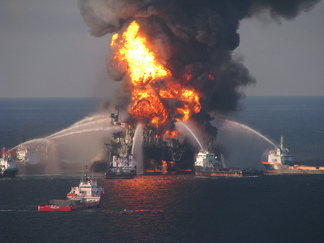 "Deepwater Horizon Offshore Oil Derrick Aflame" by EPI2oh This striking image is just one of five I found to illustrate different facets of my article. As demand for crude oil rises, will the cost of gasoline increase too? What else influences gas prices? Is there anything consumers could possibly do to reduce gas costs? Is OPEC so completely in control of crude oil prices that they can set the price of gas autonomously? As always, I also promoted this article in my DeHaan Services blog, although "Linking Gas Prices and Crude Oil Prices" adds little to what you have read here and should read at Suite 101.
Bonus Preview Image
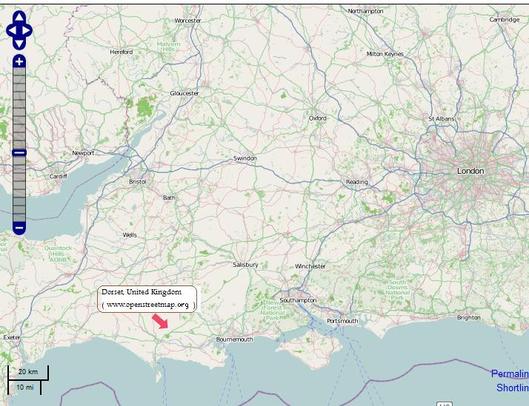 "Dorset, United Kingdom via www.openstreetmap.com" by Mike DeHaan While writing an article for Environmental Graffiti today, I decided that it needed a map. The good people at OpenStreetMap permit their software to be used, with Creative Commons license "Creative Commons Attribution-ShareAlike 2.0". I also needed to test a link to "Ladybird Spider (Eresus cinnaberinus)"
Writing Tips for Keywords
Today's writing tips all relate to key words.
Regularly check for the hot trends in key words.
After finding one you like, come up with synonyms and related phrases: probably they will either be good for searches or for advertising.
Research your subject and write your article. Find ways to use the keywords in the title, sub-headings, image captions, and especially in the text.
My latest Suite 101 article is " Will Closing a Canal Avert an Ecological Natural Disaster?". The potential disaster would occur if alien invasive species of fish were to cross from the canal into Lake Michigan.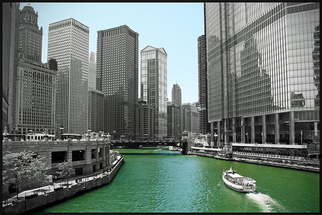 "Chicago River" by Bert Kaufmann Although this picture has the smallest direct relationship to my article, I've been using it because it is the most attractive. (It does indeed relate, because the south branch of the Chicago River is linked to the Chicago Sanitary and Ship Canal). I also plan to write at least one Environmental Graffiti article at some point, with a focus on the invasive species rather than the canal. As always, I also publicized this article in my DeHaan Services blog; today's entry is "Will a Blockade Prevent an Ecological Disaster?".
Writing Tips
Today's writing tips are simple.
First, use an eye-catching image to publicize your articles. Admittedly, I chose another picture to lead the Suite 101 article, because potential readers at that site might make the connection more quickly.
Second, plan for multiple articles based on a single unit of research. It saves time and gives a greater reward.
Just be absolutely sure to change the focus for each article; do not plagiarize yourself.
An Israeli forestry project has been planting Aleppo Pine trees in the Judean Hills.
Three Elements in a Well-Intentioned Israeli Environmental Project
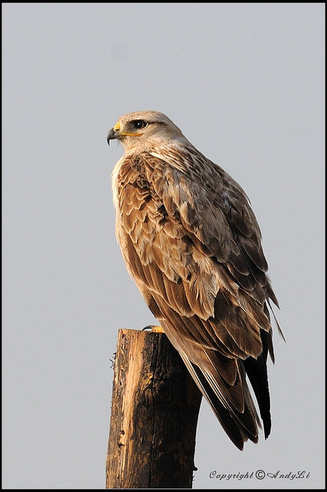 "Long-Legged Buzzard in China" by andy_li Normally Long-Legged Buzzards prefers open spaces, but the pines "encroached" on their territory. When they settled into the trees, they competed with Short-Toed Eagles. Read how this developed in my latest Environmental Graffiti article, "Beneficial Israeli Forestry Project Causes Bird Wars".Of course I also promoted this article in my DeHaan Services blog; see "Odd Environmental Result of Good Intentions in the Judean Foothills".
I generally publish a preview of images I have created for other web sites. Here are my new images for my Decoded Science article, " Starting Integral Calculus by the Summation of Riemann Integrals". 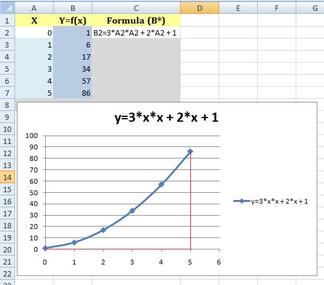 "Parabola with Area Under the Curve" by Mike DeHaan This picture was the building block for the later images of parabola.
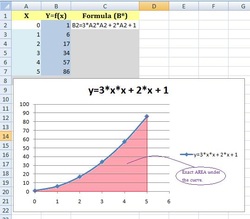 "Parabola Showing Exact Area Under the Curve" by Mike DeHaan This parabola shows the "exact" area under the curve. On second thought, it should have been a green colour.
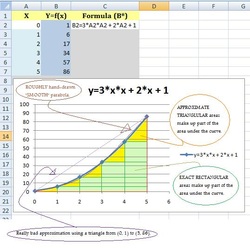 "Parabola Showing Approximate Area Under the Curve" by Mike DeHaan The same parabola shows 2 different approximations for the area under the curve.
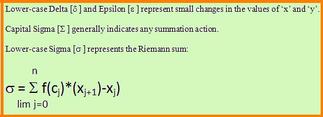 "Riemann Sum Formula" by Mike DeHaan Riemann's formula for the sum of Riemann intervals is a masterpiece when copied from a Word document wherein the Greek "symbolic" alphabet can be used.
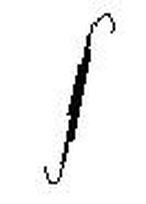 "Integral Symbol" by Mike DeHaan Here is my best attempt to draw the "integration function" symbol.
Writing Tips
As always, I also promote my articles by mentioning them in my DeHaan Directory's " DeHaan Writing" page, as well as on DeHaan Services blog. The blog post is " Using Riemann Sums to Introduce Integral Calculus". Writing Tips:Obviously, I continue to lay claim to images by publishing them in "my own" blogs. More important is the need to research carefully. I knew that I wanted to continue my series on calculus. The explanation for Riemann integrals was adapted from a fine textbook written at the university level. Let me be clear: the article is in my own words. However, I owe a lot to the professor for laying out the structure and logical flow. (I did change the order of a couple of items). This research gave me the logical sequence necessary to carry the discussion forward.
|





















 RSS Feed
RSS Feed